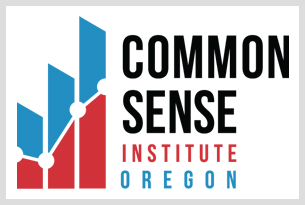Author: Mark McMullen
All of the data discussed in this report come from the U.S. Bureau of Labor Statistics’ Consumer Price Index (CPI) database. This source no longer produces estimates of price levels in Oregon nor any metropolitan area within Oregon, so this report references data from the Pacific region (Alaska, California, Hawaii, Oregon, and Washington).
Prices Have Been Relatively Flat in Recent Weeks, but Monetary Policymakers Need More Data to Act
The inflationary environment has cost the average Pacific-region household almost $28,500 relative to its spending in 2020. After picking up at the beginning of 2024, growth in prices has slowed in recent weeks across the country. Between March and May of 2024, prices in the Pacific region grew by 0.68%, roughly in line with nationwide trends. As with the U.S. as a whole, the region’s price level is now 20.0% higher than it was at the start of 2021. Prior to the inflationary boom of recent years, inflation in the Pacific region had been outstripping nationwide trends due to rapid price growth in housing and transportation services.
Over the past year, the price level in the Pacific region grew by 3.7%, somewhat above the national trend of 3.3%. Regional prices for energy, food, medical care and transportation all grew faster than the national average. Prices of apparel, education and recreation displayed relatively slower growth locally.
Over the past two months, regional prices for entertainment (-0.8%) decreased while those of food (0.7%), housing (0.4%), transportation (2.2%) and medical care (1.1%) rose. Prices for education and energy products remained relatively unchanged over the period.
- Between March ‘24 and April ‘24, prices in the Pacific region rose by 0.7%. In the U.S. as a whole, prices rose by 0.6%.
- From March ‘24 to May ‘24, the price of transportation grew by 2.2% in the Pacific region, and the price of medical care grew by 1.1%.
- Pacific-region inflation has outpaced the national average over the last 12 months—7% in the Pacific region compared to 3.3% across the U.S.
- Over the past year, the Pacific region has seen above-average price growth for energy (8.0% vs 4.3%), medical care (4.9% vs 3.1%) and transportation (4.9% vs 2.9%). Price growth has been slower locally for apparel (-1.8% vs 0.8%), education (0.6% vs 2.7%) and recreation services (-0.1% vs 1.3%).
The slowdown of inflation seen in recent weeks makes it more likely the monetary policymakers will be able to engineer a soft landing in the months to come. That said, with the labor market remaining tight, additional encouraging inflation data will be needed before the Federal Reserve cuts rates. The most likely scenario now calls for one rate cut this year occurring in December.
Inflation in the Pacific region over the last 12 months was 3.7%—0.4 of a percentage point above the national average (BLS CPI Survey)[i]
- Over the past 12 months, energy products (8.0%) and services (5.6%) have displayed the fastest growth in the Pacific region.
- The two price categories in the region that saw the largest price declines over the last 12 months are durable goods and apparel, which fell by 4.0% and 1.8%, respectively.
[i] https://www.bls.gov/cpi/

